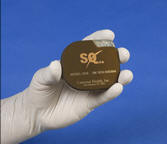April 23rd, 2012
FDA Posts Results of Cameron Subcutaneous ICD Pivotal Trial
Larry Husten, PHD
 In preparation for Thursday’s meeting of the FDA’s Circulatory System Devices advisory panel, the FDA has released the results of the pivotal trial for the Cameron Health subcutaneous ICD system (S-ICD). The results have not been previously available. Unlike previous ICDs, which require threading a transvenous lead to the heart, the S-ICD system contains no leads to connect the device to the heart.
In preparation for Thursday’s meeting of the FDA’s Circulatory System Devices advisory panel, the FDA has released the results of the pivotal trial for the Cameron Health subcutaneous ICD system (S-ICD). The results have not been previously available. Unlike previous ICDs, which require threading a transvenous lead to the heart, the S-ICD system contains no leads to connect the device to the heart.
The S-ICD pivotal trial was a prospective, nonrandomized, single-arm study performed at 33 sites. The trial enrolled 330 patients, 314 of whom received the S-ICD system. Mean follow-up was 321 days.
The FDA found that the trial met the primary safety and effectiveness endpoints.
For safety, the system-complicaton-free rate at 180 days was 97.9%, which was well above the performance goal of 79%. Eight patients died during the trial, but none of the deaths were tied to the S-ICD system. Four patients had systemic infections requiring explant of the device, while 14 had incision or superficial infections that did not require an explant. The FDA noted that when compared to traditional transvenous ICDs, the S-ICD system had “higher rates of infection, increased time to delivered therapy, and reduced device service life.”
Inappropriate shocks occurred in 38 patients (11.8%); 32 of these patients were managed noninvasively with system reprogramming and drug therapy. Overall, 30.6% of shocks were deemed inappropriate. The FDA reviewer said that a literature review found that about one-third of shocks were inappropriate in a similar group of patients with standard ICDs.
The efficacy rate was 100%. Acute VF conversion was successful in 304 instances, with no failures. Sixteen episodes were nonevaluable. The FDA calculated that even if all the nonevaluable cases were assumed to be failures, the lower confidence interval for the efficacy rate would have been 91.7%, still well above the performance goal of 88%.
